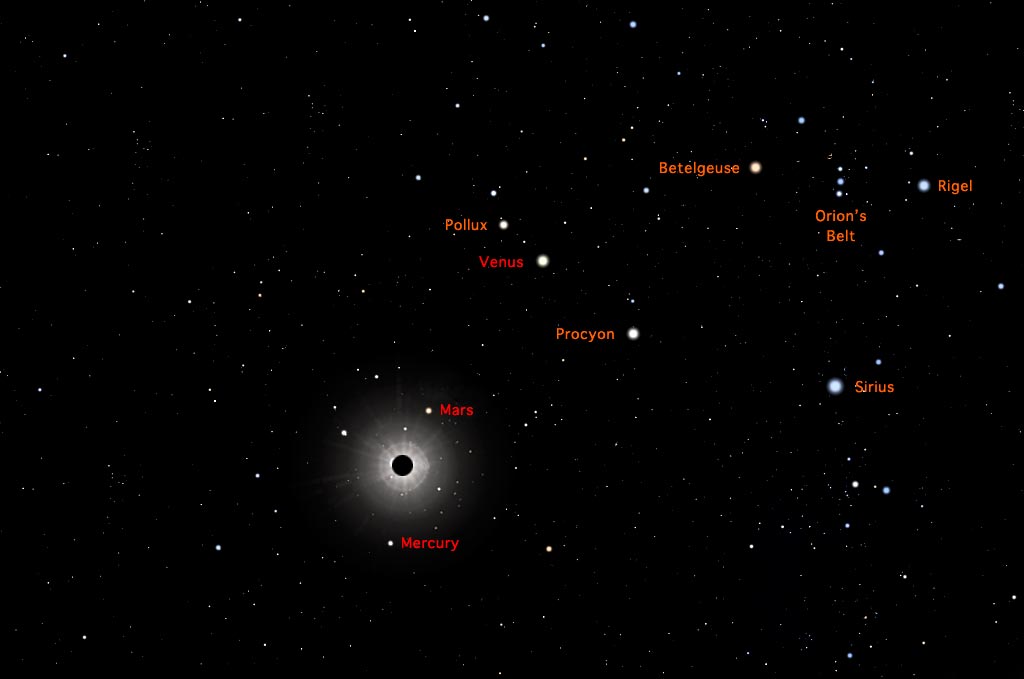
Download a printable version of this sky map
Looking at this simulation, I will describe for you, using clock face angles, the positions of key objects you will be able to see when the Moon completely covers the Sun.
Elusive MERCURY, which pops up low after sunset or before sunrise, will now appear as it always does very close to the Sun. Now with the Sun's brightness removed, it is easily seen at the 6:30 o'clock position directly underneath the Sun.
MARS, now completely invisible during the daytime is actually a little bit brighter and closer than Mercury at the 1 o'clock position. It's distinctive yellow-orange color and proximity to the Sun should make it easy to identify.
Moving away from the darkened Sun outward in the 2 o'clock position is the grand trio of POLLUX (the 1st magnitude companion of Castor in the constellation Gemini), VENUS strikingly bright against the eclipsed Sun, and PROCYON (the brightest star in Canis Minor—the Little Dog).
Moving out even further away from the eclipsed Sun at the 2:30 o'clock position is SIRIUS, the brightest star in CanIs Major—the Big Dog. Sirius will be the brightest star in the sky next to the planet Venus, which outshines them all.
Look above Sirius and you'll see at the 2 o'clock position the BELT OF ORION set off by the very bright stars Betelgeuse (left of Orion's Belt) and equally bright Rigel (to the right of Orion's Belt).
If you are in a unlighted wilderness area while gazing at this part of the sky, make the supreme observation test and see if you can see the WINTER MILKY WAY to the left of Sirius and Betelgeuse snaking its way from the horizon to the zenith. If you can see that, you are truly in a dark-sky environment and we would like to receive your report!